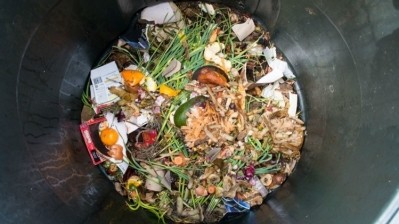Food shortages are a bigger threat than food inflation for import-dependent GCC countries – report

The COVID-19 pandemic, Russia-Ukraine war, and climate change have shed light on the fragility of supply chains and impacted food commodity prices worldwide.
Like countries around the world, food inflation has also been seen in GCC countries. Yet, despite rising prices, it is the accessibility to food products, rather than affordability, that poses a threat to food security in this region.
This is a key finding recently published in the Food Security in the GCC report by Marmore, the research arm of Kuwait Financial Centre (Markaz).
“While consumers in GCC nations had felt the pinch of the rise in food prices, high income levels provided sufficient financial buffers to absorb any intermittent price shocks to ensure there are no concerns over affordability.
“However, the reliance on food imports makes them vulnerable to supply chain disruptions, protectionist trade policies, and resultant shortages. This implies that any disruption in food production, supply or distribution elsewhere in the world would force the GCC countries to find substitutes and alternate supplies, usually at a high cost.”
Based on the report, GCC countries import nearly 85% of their food needs, including approximately 93% of cereals, 62% of meat, and 56% of vegetables.
The dependence on food imports is largely attributed to the lack of fertile land, water resources, and climate conditions conducive for agriculture.
Spotlight on Kuwait
Some 95% of Kuwait’s food needs are said to be met through imports.
Although wheat was one of the staples affected by the Russia-Ukraine war, as the countries were key exporters, Kuwait did not appear to be impacted by it.
This is because Kuwait Flour Mills and Bakeries Company (KFMB), the sole importer of wheat in the country, imports the grain from Australia.
In March 2022, the Director of Public Authority for Industry had said that the country had stockpiles of about 80% of basic commodities, including food and industrial items, that were sufficient for about eight months to a year.
However, a media report in July stated that the “ample supply” had declined, compared to the previous year, with frozen chicken and lentils named as some commodities that were in shortage.
Mitigating food security risks
While GCC countries had experienced the threat of rising food prices and risks of reliance on imports, they have been able to maintain access to essential food items due to long-term food security measures implemented after the 2007-2008 world food price crisis.
Countries like the UAE, Qatar and Kuwait have adopted various strategies to achieve self-sufficiency in important food commodities, and leverage agritech to boost local production.
For instance, the UAE and Qatar have developed their respective National Food Strategy, which is aimed at increasing domestic production of strategic food items, diversifying import sources, reducing waste, and establishing adequate reserves.
Additionally, the UAE has sealed partnerships with other countries to enhance food security, including the India-UAE Food Corridor and I2U2 initiatives.
According to the Marmore report, Kuwait has submitted a proposal on a strategic plan for food security until 2035 to the National Assembly.
The plan constitutes a price control system that enables consumers to check prices of basic food items in an online portal, freezing of food costs, streamlining importation of products from Egypt to lessen testing, approving import of beef from Brazil, and more.
At the same time, the UAE is investing in novel farming methods such as indoor vertical farming and hydroponics, as well as digital tools using artificial intelligence and data analytics, to build capacity for future-ready, tech-based food and agriculture products.
Furthermore, the UAE and Saudi Arabia have purchased farmlands overseas, with the latter having acquired land in Sudan, Pakistan, and Belarus.
Recommendations for retailers
To reduce vulnerability to supply chain disruptions, food retailers in the region are urged to take up measures to keep their shelves well stocked and goods competitively priced.
One example is by informing consumers of supply chain-related reasons for products that are out of stock, and directing them to alternatives. This could improve customer retention and maintain the retailer’s brand image.
“In addition, retailers should communicate with suppliers to find out the expected supply of products so that they can better plan their inventory and promotions. Maintaining multiple vendor channels could also aid in improving the chances of product availability.
“Estimating demand solely based on prior sales history may not hold well in a fluid environment. Using real-time data would help in improving the accuracy of forecasts by taking current global issues into account.”















